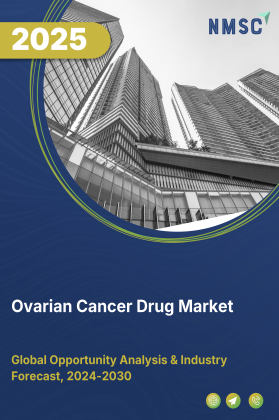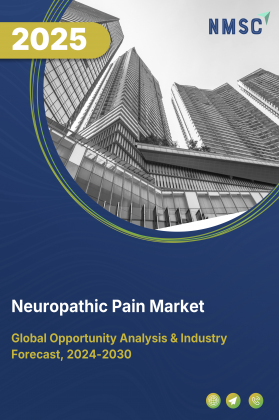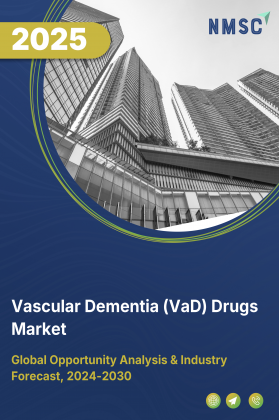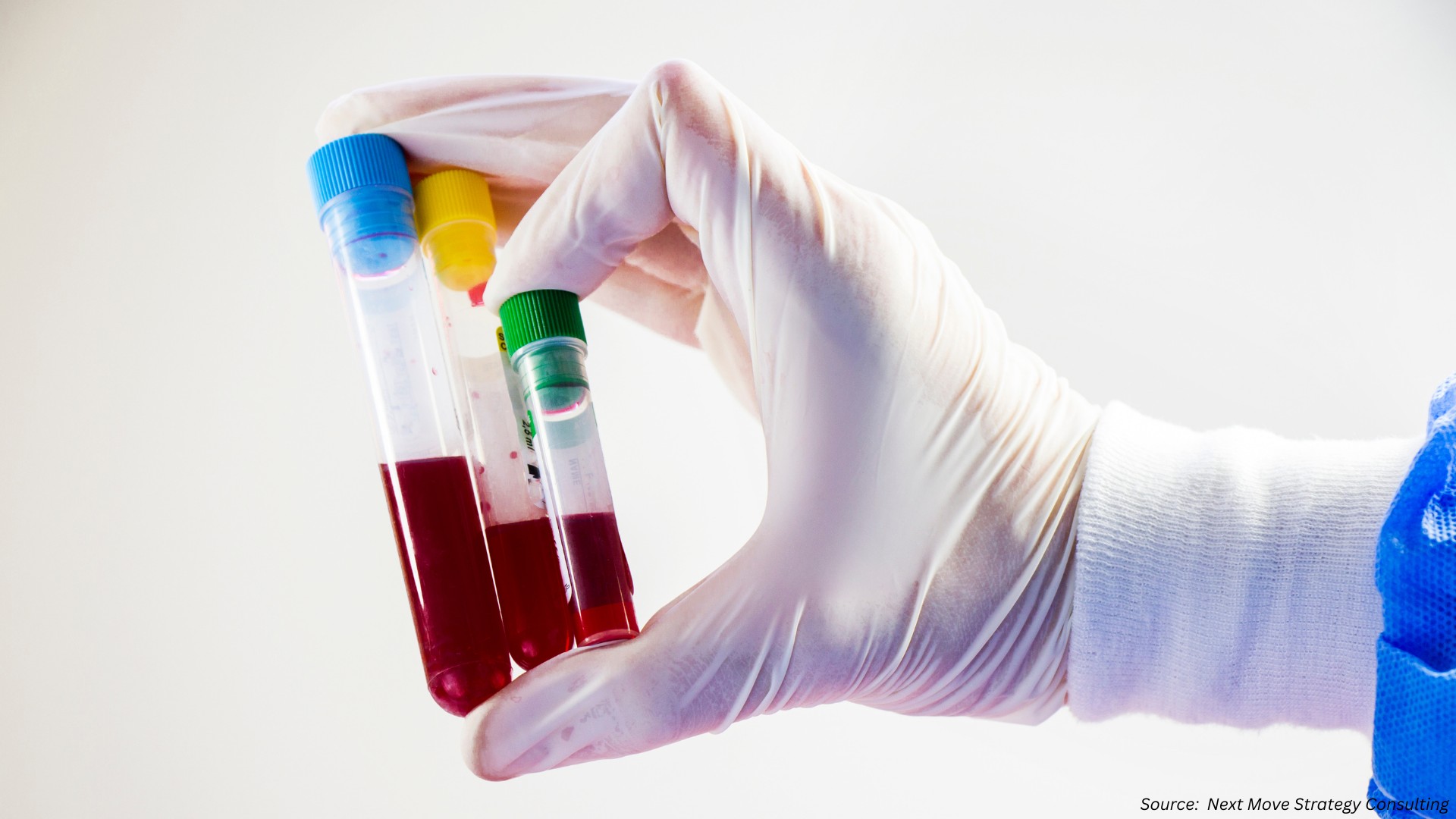
Fondaparinux Market by Type (Deep Vein Thrombosis, Pulmonary Embolism, Acute Coronary Syndrome, and Others), by Product Type (Generic and Branded), by Dosage Form (Injection and Pre-filled Syringe), by Distribution Channel (Hospital Pharmacies, Retail Pharmacies, and Online Pharmacies), by End-Users (Hospitals, Specialty Clinics, and Others) – Global Analysis & Forecast, 2025–2030
Industry Outlook
The global Fondaparinux Market size was valued at USD 0.82 billion in 2024 and is expected to reach USD 0.87 billion by 2025. Looking ahead, the industry is projected to expand significantly, reaching USD 1.22 billion by 2030, registering a CAGR of 6.91% from 2025 to 2030.
The fondaparinux market has steadily evolved as a critical segment within the broader anticoagulant and cardiovascular therapeutics industry. Today, the market is characterized by a growing demand for safer, targeted anticoagulants that minimize the risks associated with traditional therapies such as heparin. Fondaparinux, a synthetic factor Xa inhibitor, is widely recognized for its predictable pharmacokinetics, low risk of heparin-induced thrombocytopenia, and ease of administration via subcutaneous injection. Its applications span the prevention and treatment of deep vein thrombosis, pulmonary embolism, and acute coronary syndromes. The market is supported by increasing awareness of thromboembolic disorders, an aging global population, and advancements in minimally invasive surgeries, which collectively drive clinical adoption.
Looking ahead, the fondaparinux industry shows promising growth prospects fueled by ongoing research and development efforts aimed at expanding therapeutic indications and improving patient convenience. Emerging pharmaceutical manufacturers and independent API producers are entering the market, enhancing supply chain robustness and accessibility. Additionally, trends in personalized medicine and hospital based protocols are likely to encourage wider adoption, particularly in high-risk patient populations. The development of biosimilars and novel anticoagulant formulations may further diversify product offerings, while strategic collaborations and regulatory approvals across different regions are expected to strengthen the global footprint. Overall, the market’s trajectory reflects a blend of clinical innovation, safety-driven preference, and increasing therapeutic demand.
Also, rising gross disposable income is a significant factor driving the growth of the fondaparinux market. As patients and healthcare systems have greater financial capacity, they are more willing to invest in advanced and effective anticoagulant therapies. This increased spending power supports the adoption of branded and innovative formulations of Fondaparinux, including pre-filled syringes and hospital-administered treatments. Regions experiencing higher income growth tend to show faster uptake of these therapies, making disposable income an important driver for market expansion and broader accessibility of Fondaparinux in both developed and emerging healthcare markets.
What are the Key Fondaparinux Industry Trends?
How is the Fondaparinux Market Evolving with the Rise of Generic Competitors?
The global fondaparinux industry is experiencing a significant shift due to the increasing dominance of generic formulations. This trend is driven by the expiration of patents for branded fondaparinux products, allowing multiple manufacturers to produce and distribute generic versions. Consequently, the market has become more price-sensitive, with generics offering the same therapeutic benefits at a lower cost. For companies operating in this space, they focus on the development and distribution of generic fondaparinux which serve as a strategic move to capture a larger market share. Additionally, ensuring compliance with regulatory standards and maintaining high manufacturing quality acts crucial in gaining the trust of healthcare providers and patients.
What Role do Biosimilars Play in Shaping the Future of Fondaparinux?
Biosimilars are emerging as a significant factor in the fondaparinux market, particularly as they offer a more affordable alternative to branded products. This growth is propelled by an increase in outpatient joint-replacement procedures and a rise in cancer-associated thrombosis cases, both of which contribute to the demand for anticoagulant therapies. For companies in the pharmaceutical industry, investing in the development of biosimilars for fondaparinux present a lucrative opportunity. However, it's essential to navigate the complex regulatory pathways and ensure that biosimilars meet the stringent quality standards set by health authorities. Establishing strong intellectual property protections and building relationships with healthcare providers is also vital for success in this segment.
How is Artificial Intelligence (AI) Enhancing Fondaparinux Therapy Management?
Artificial Intelligence is increasingly integrated into healthcare systems, significantly impacting the management of fondaparinux therapy. AI-driven tools assist clinicians in diagnosing conditions like deep vein thrombosis and pulmonary embolism at earlier stages, enabling timely intervention. Moreover, AI algorithms aid in personalizing anticoagulation therapy by analyzing patient data, thereby optimizing treatment plans and minimizing risks associated with bleeding complications. This technological advancement not only improves patient outcomes but also enhances the efficiency of healthcare delivery.
The above chart displays annual private investment in AI for the medical and healthcare sector from 2018 to 2024, showing a sharp rise from USD 1.2 billion in 2018 to peaks above USD 11 billion in 2021 and consistently high values through 2024. Increased AI investment accelerates innovation in areas like diagnostic tools, patient management, and personalized treatment, which can improve early detection and management of thromboembolic disorders. This technological progress expands the application and accessibility of advanced therapies such as Fondaparinux, thereby driving greater market growth as healthcare systems adopt AI-driven solutions for improved anticoagulant therapy delivery and patient outcomes.
What are the Key Market Drivers, Breakthroughs, and Investment Opportunities that will Shape the Fondaparinux Industry in the Next Decade?
The fondaparinux industry is experiencing significant growth, driven by several key factors. This growth is primarily fueled by the increasing prevalence of thromboembolic disorders, the aging global population, and advancements in surgical procedures. Fondaparinux, a synthetic anticoagulant, plays a crucial role in preventing and treating conditions such as deep vein thrombosis and pulmonary embolism.
However, the market also faces challenges that impact its growth trajectory. Safety concerns, such as the risk of bleeding and other anticoagulant-related adverse events, remain a significant issue. Clinicians exercise caution when prescribing fondaparinux to high-risk populations, including elderly patients and those with renal impairment. Additionally, the emergence of generic alternatives and biosimilars is intensifying competition, potentially affecting market share and pricing strategies. Despite these challenges, opportunities exist in expanding therapeutic indications and leveraging digital health technologies to enhance treatment outcomes.
Growth Drivers:
How is the Rising Incidence of Thromboembolic Disorders Influencing the Fondaparinux Market Trends?
The increasing incidence of thromboembolic disorders, including DVT and PE, is a primary driver of the fondaparinux industry. These conditions are prevalent among hospitalized patients, particularly those undergoing major surgeries. Fondaparinux's efficacy in preventing and treating these disorders positions it as a preferred choice for clinicians. As the global population ages, the incidence of such disorders is expected to rise, further boosting the demand for effective anticoagulant therapies. For pharmaceutical companies, this trend underscores the importance of focusing on the development and distribution of fondaparinux. Investing in research to expand its indications and exploring partnerships with healthcare providers enhance market penetration. Moreover, educating healthcare professionals about the benefits and safety profile of fondaparinux facilitate its adoption in clinical settings.
How is the Aging Global Population Impacting the Fondaparinux Market Demand?
The aging global population is significantly contributing to the increased demand for fondaparinux. Older adults are more susceptible to thromboembolic events due to factors like reduced mobility and comorbidities. This demographic shift necessitates effective anticoagulant therapies to manage and prevent such conditions. Fondaparinux's safety profile and ease of administration make it an attractive option for treating elderly patients. For companies in the pharmaceutical industry, targeting this aging population with tailored marketing strategies and patient education programs drive adoption. Additionally, collaborating with geriatric care specialists and integrating fondaparinux into standardized treatment protocols further enhance its utilization among older adults.
The chart above shows the percentage of elderly population. Since the elderly are at increased risk of thromboembolic events, such as deep vein thrombosis and pulmonary embolism, regions with a larger aging demographic will have greater demand for anticoagulant treatments like Fondaparinux. As a result, countries with higher elderly populations, as depicted in the chart, serve as key growth markets for Fondaparinux, since the prevalence of related conditions rises substantially with age, directly driving market expansion.
Growth Inhibitors:
What are the Safety Concerns Associated with Fondaparinux?
Fondaparinux is associated with safety concerns, particularly the risk of bleeding and other anticoagulant-related adverse events. These risks are heightened in high-risk populations, such as the elderly and those with renal impairment. Such safety issues affect physician preference and patient adherence, limiting broader utilization. To address these concerns, pharmaceutical companies invest in post-market surveillance and pharmacovigilance to monitor adverse events. Developing educational materials for healthcare providers and patients about safe usage practices and potential risks mitigate these safety issues. Additionally, exploring formulations with improved safety profiles or antidotes for bleeding complications enhance the therapeutic value of fondaparinux.
How Can Digital Health Technologies Enhance Fondaparinux Therapy Management?
The integration of digital health technologies is revolutionizing the management of fondaparinux therapy. Digital tools, such as electronic health records (EHRs) and mobile health applications, enable healthcare providers to monitor patient responses to fondaparinux in real-time, facilitating timely adjustments to treatment plans. This approach enhances the safety and efficacy of anticoagulant therapy, particularly in patients with complex medical histories. For pharmaceutical companies, collaborating with tech firms to develop and integrate digital solutions into their products offer a competitive edge. Additionally, providing training and support to healthcare providers on the use of these technologies acts as an essential to ensure their effective implementation and utilization.
How Fondaparinux Market Segmented in This Report, And What are the Key Insights from the Segmentation Analysis?
By Type Insights
Is Fondaparinux Dominating the Market in 2025 Across All Thromboembolic Disorders?
Based on type, the market is segmented into deep vein thrombosis (DVT), pulmonary embolism (PE), acute coronary syndrome (ACS), and others.
Fondaparinux is extensively used for the treatment and prevention of DVT. Clinical studies have demonstrated its effectiveness in reducing the recurrence of venous thromboembolism (VTE) and its safety profile, especially in patients undergoing orthopedic surgeries. For instance, the MATISSE-DVT trial highlighted fondaparinux's superiority over enoxaparin in preventing postoperative DVT without increasing bleeding risks.
In the management of PE, fondaparinux serves as an effective alternative to low molecular weight heparins (LMWH) and unfractionated heparin. The MATISSE-PE trial demonstrated that fondaparinux is non-inferior to enoxaparin in treating PE, with a lower incidence of major bleeding events. Its predictable pharmacokinetics and renal excretion make it a suitable option for patients with varying degrees of renal function.
Fondaparinux is utilized in the treatment of ACS, including non-ST elevation myocardial infarction (NSTEMI) and unstable angina. The OASIS-5 trial demonstrated that fondaparinux significantly reduces the risk of death or myocardial infarction compared to enoxaparin in NSTEMI patients, without increasing major bleeding complications. Its selective inhibition of factor Xa and lack of platelet aggregation make it a valuable therapeutic agent in ACS management. However, its long half-life necessitates careful monitoring, especially in patients undergoing percutaneous coronary interventions.
By Product Type Insights
Is Generic Fondaparinux Gaining Ground Over Branded Products in 2025?
On the basis of product type, the market is segmented into generic fondaparinux and branded fondaparinux.
Generic fondaparinux offers the same pharmacological benefits as branded versions, including predictable factor Xa inhibition and subcutaneous administration. Its rising adoption is fueled by patent expirations of branded products, allowing multiple manufacturers to enter the market. This has enhanced drug accessibility, particularly in cost-sensitive healthcare systems.
On the other hand, branded fondaparinux maintains a strong foothold in developed markets, primarily due to physician familiarity, brand trust, and established supply chains. It often benefits from long-standing clinical data supporting safety and efficacy, which is valuable for high-risk patient populations. Branded products also leverage targeted marketing and educational campaigns for healthcare providers.
By Dosage Form Insights
Is Injection Dominating the Fondaparinux Market Share in 2025?
On the basis of dosage form, the market is segmented into injection and pre-filled syringe.
Traditional injection vials of fondaparinux remain prevalent in hospitals and surgical centers. They allow for precise dosing adjustments in patients with variable body weights or renal function. Clinical studies indicate that standard injections are preferred in acute care settings, where trained staff can manage administration and monitor for adverse events. For companies, optimizing vial production and distribution channels to ensure availability in high-volume hospitals is a key actionable insight.
Pre-filled syringes of fondaparinux are increasingly adopted for outpatient use, home care, and elderly patients requiring self-administration. These syringes simplify dosing, enhance safety by reducing handling errors, and minimize infection risks. From a market perspective, pre-filled syringes offer opportunities for pharmaceutical companies to differentiate products through convenience and safety.
By Distribution Channel Insights
Which Distribution Channel Strategy Driving Fondaparinux Market Growth in 2025?
On the basis of distribution channel, the market is segmented into hospital pharmacies, retail pharmacies, and online pharmacies.
Hospital pharmacies are the primary distribution channel for fondaparinux, particularly in inpatient settings such as orthopedic and cardiovascular units. They ensure correct dosing, patient monitoring, and adherence to clinical protocols. Hospitals also manage high-risk patient populations where the risk of bleeding or renal impairment requires careful supervision. Retail pharmacies provide accessibility for outpatient treatment and follow-up care. Patients prescribed fondaparinux for ongoing thromboprophylaxis conveniently obtain their medication from local pharmacies. This channel also enables pharmacists to provide guidance on proper administration, storage, and safety precautions. Online pharmacies are gaining traction as digital health adoption rises. They offer convenience, home delivery, and discreet access, particularly for elderly or mobility-limited patients.
By End-Users Insights
Is End-Users-Based Segmentation Driving Fondaparinux Market Growth in 2025?
On the basis of end-users, the market is segmented into hospitals, specialty clinics, and others.
Hospitals are the largest end-users of fondaparinux, particularly for patients undergoing orthopedic, cardiovascular, or abdominal surgeries. They ensure proper dosing, monitoring, and management of high-risk patients, such as the elderly or those with renal impairment. For pharmaceutical companies, strengthening hospital partnerships, providing clinical training, and ensuring a reliable supply of both injections and pre-filled syringes maximize uptake.
Specialty clinics, including cardiology and hematology centers, increasingly use fondaparinux for outpatient management of thromboembolic disorders and acute coronary syndromes. These clinics focus on tailored treatment protocols and patient follow-up, providing an opportunity for companies to educate healthcare providers on dosing, safety, and administration. The others category includes home care services, long-term care facilities, and telemedicine-supported administration. This segment is growing as patients and healthcare systems increasingly favor home-based anticoagulant therapy for convenience and cost efficiency. Companies capitalize on this trend by providing patient education, digital monitoring tools, and delivery solutions to ensure adherence and safe self-administration.
Regional Outlook
The fondaparinux market is geographically studied across North America, Europe, Asia Pacific, Middle East & Africa, and Latin America and each region is further studied across countries.
The regional outlook of the fondaparinux market is influenced by health expenditure, such as Germany and Denmark, contribute significantly to market growth due to robust healthcare infrastructure, better patient access, and increased adoption of advanced anticoagulant therapies. In these markets, higher health spending supports widespread screening and treatment capabilities for thromboembolic disorders, thus expanding the eligible patient base and accelerating market penetration for Fondaparinux. Meanwhile, emerging markets, driven by expanding healthcare budgets and improving infrastructure, represent the fastest-growing segment, as rising expenditure enables broader adoption and availability of cost-effective therapies for a growing population at risk.
Fondaparinux Market in North America
North America remains a significant contributor to the global fondaparinux industry, driven by advanced healthcare infrastructure, high surgical volumes, and a growing elderly population. The United States leads the region, followed by Canada which also exhibits steady adoption, supported by its universal healthcare system and increasing prevalence of thromboembolic disorders. The demand for fondaparinux is bolstered by its efficacy in preventing and treating conditions like deep vein thrombosis and pulmonary embolism, particularly in post-surgical settings. The region's focus on patient safety, preference for injectable anticoagulants, and the availability of both branded and generic formulations contribute to the market's growth.
Fondaparinux Market in the United States
In the United States, fondaparinux's market dominance is attributed to its clinical effectiveness, ease of administration, and favourable safety profile. The U.S. healthcare system's emphasis on evidence-based treatments and patient outcomes has facilitated the widespread adoption of fondaparinux, especially in orthopaedic and cardiovascular surgeries. The market is further supported by the presence of established healthcare providers, robust distribution channels, and a regulatory environment that ensures the availability of high-quality anticoagulant therapies. The increasing incidence of venous thromboembolism and the aging population are expected to drive sustained demand for fondaparinux in the coming years.
Fondaparinux Market in Canada
Canada's fondaparinux industry is characterized by its universal healthcare system, which ensures equitable access to anticoagulant therapies across the population. The country's aging demographic and rising rates of chronic conditions such as diabetes and hypertension contribute to the growing prevalence of thromboembolic disorders, thereby increasing the demand for effective treatments like fondaparinux. Healthcare providers in Canada prioritize patient safety and treatment efficacy, leading to the adoption of fondaparinux in both hospital and outpatient settings. The market is also influenced by government policies that support the use of cost-effective and clinically proven medications.
Fondaparinux Market in Europe
Europe holds a substantial share of the global fondaparinux industry, driven by well-established healthcare systems, high awareness of thromboembolic disorders, and a preference for injectable anticoagulants. Countries like Germany, France, and the United Kingdom are at the forefront of adopting fondaparinux due to their advanced medical infrastructure and emphasis on evidence-based medicine. The market is further supported by regulatory frameworks that facilitate the availability of both branded and generic fondaparinux, ensuring broad access to treatment options. The increasing number of surgical procedures and the aging population in Europe are expected to sustain the demand for fondaparinux in the region.
Fondaparinux Market in the United Kingdom
In the United Kingdom, fondaparinux is widely used in the prevention and treatment of venous thromboembolism, particularly in patients undergoing orthopedic surgeries. The National Health Service prioritizes cost-effective and clinically effective treatments, leading to the adoption of fondaparinux as a preferred anticoagulant. The UK's regulatory environment ensures the availability of high-quality medications, and healthcare professionals are well-trained in the administration and monitoring of fondaparinux therapy. The increasing incidence of thromboembolic events and the focus on patient safety are key drivers of the fondaparinux market in the UK.
Fondaparinux Market in Germany
Germany's fondaparinux industry is characterized by its strong healthcare infrastructure, high healthcare expenditure, and a focus on innovation in medical treatments. The country's hospitals and clinics are early adopters of advanced anticoagulant therapies, including fondaparinux, due to its proven efficacy and safety profile. Germany's regulatory agencies ensure that only high-quality medications are available in the market, fostering trust among healthcare providers and patients. The aging population and the prevalence of cardiovascular diseases contribute to the growing demand for fondaparinux in Germany.
Fondaparinux Market in France
France's fondaparinux industry benefits from a universal healthcare system that provides widespread access to anticoagulant therapies. The country's emphasis on preventive healthcare and the management of thromboembolic disorders has led to the adoption of fondaparinux in both hospital and outpatient settings. French healthcare providers prioritize patient safety and treatment efficacy, leading to favorable outcomes with fondaparinux therapy. The market is also influenced by government policies that support the use of clinically proven and cost-effective medications.
Fondaparinux Market in Italy
In Italy, fondaparinux is utilized in the prevention and treatment of venous thromboembolism, particularly in patients undergoing major surgeries. The country's healthcare system ensures access to high-quality medications, and healthcare professionals are trained in the administration and monitoring of anticoagulant therapies. The increasing number of surgical procedures and the aging population in Italy contribute to the growing demand for fondaparinux. The market is further supported by the availability of both branded and generic formulations, providing cost-effective treatment options.
Fondaparinux Market in Spain
Spain's fondaparinux industry is influenced by its public healthcare system, which provides equitable access to anticoagulant therapies. The country's focus on preventive healthcare and the management of thromboembolic disorders has led to the adoption of fondaparinux in various clinical settings. Spanish healthcare providers emphasize patient safety and treatment efficacy, leading to positive outcomes with fondaparinux therapy. The market is also driven by the increasing prevalence of cardiovascular diseases and the aging population in Spain.
Fondaparinux Market in the Nordics
The Nordic countries, including Sweden, Denmark, Norway, and Finland, exhibit high healthcare standards and a strong emphasis on patient safety. Fondaparinux is widely used in these countries for the prevention and treatment of thromboembolic disorders, particularly in surgical patients. The availability of both branded and generic formulations ensures broad access to treatment options. The aging population and the increasing incidence of chronic diseases in the Nordic region contribute to the sustained demand for fondaparinux.
Fondaparinux Market in the Asia-Pacific
The Asia-Pacific region is experiencing significant growth in the fondaparinux industry, driven by improving healthcare infrastructure, increasing awareness of thromboembolic disorders, and rising surgical procedures. Countries like China, Japan, India, South Korea, and Taiwan are major contributors to this growth. The adoption of fondaparinux is facilitated by its efficacy in preventing and treating conditions like deep vein thrombosis and pulmonary embolism. Government initiatives to enhance cardiovascular care and increasing patient awareness further support market expansion in the Asia-Pacific region.
Fondaparinux Market in China
China's fondaparinux market is expanding rapidly. The country's large population, rising prevalence of thromboembolic disorders, and improving healthcare infrastructure contribute to this growth. Fondaparinux is increasingly adopted in China for the prevention and treatment of venous thromboembolism, particularly in post-surgical patients. The market is further supported by the availability of generic formulations, making treatment more accessible to a broader population.
Fondaparinux Market in Japan
Japan's fondaparinux industry is characterized by its advanced healthcare system, high life expectancy, and a growing elderly population. The country's hospitals and clinics are early adopters of advanced anticoagulant therapies, including fondaparinux, due to its proven efficacy and safety profile. The increasing incidence of cardiovascular diseases and thromboembolic disorders in Japan drives the demand for effective treatments like fondaparinux. The market is also influenced by government policies that support the use of clinically proven medications.
Fondaparinux Market in India
India's fondaparinux industry is experiencing steady growth, driven by an increasing burden of thromboembolic disorders, rising surgical procedures, and expanding healthcare access. The country's large population and improving healthcare infrastructure contribute to the growing demand for anticoagulant therapies. Fondaparinux is utilized in India for the prevention and treatment of venous thromboembolism, particularly in high-risk surgical patients. The market is further supported by the availability of generic formulations, making treatment more affordable and accessible to a larger segment of the population.
Fondaparinux Market in South Korea
South Korea's fondaparinux sector is influenced by its advanced healthcare system, high healthcare expenditure, and a focus on innovation in medical treatments. The country's hospitals and clinics are early adopters of advanced anticoagulant therapies, including fondaparinux, due to its proven efficacy and safety profile. The aging population and the increasing prevalence of cardiovascular diseases in South Korea contribute to the growing demand for fondaparinux. The market is also supported by government policies that promote the use of clinically effective medications.
Fondaparinux Market in Taiwan
Taiwan's fondaparinux market is characterized by its universal healthcare system, which ensures equitable access to anticoagulant therapies. The country's emphasis on preventive healthcare and the management of thromboembolic disorders has led to the adoption of fondaparinux in both hospital and outpatient settings. Taiwanese healthcare providers prioritize patient safety and treatment efficacy, leading to favorable outcomes with fondaparinux therapy. The market is also influenced by government policies that support the use of cost-effective and clinically proven medications.
Fondaparinux Market in Indonesia
Indonesia's fondaparinux market is poised for growth between 2025 and 2031, driven by an increasing prevalence of cardiovascular diseases and a growing geriatric population. The nation's expanding healthcare infrastructure and rising awareness about thromboembolic disorders contribute to the demand for effective anticoagulant therapies. However, challenges such as stringent regulatory requirements, high treatment costs, and limited access to healthcare facilities in remote areas may impact market expansion.
Fondaparinux Market in Australia
Australia's fondaparinux industry is influenced by its advanced healthcare system, high life expectancy, and a growing elderly population. The country's hospitals and clinics are early adopters of advanced anticoagulant therapies, including fondaparinux, due to its proven efficacy and safety profile. The increasing incidence of cardiovascular diseases and thromboembolic disorders in Australia drives the demand for effective treatments like fondaparinux. The market is also supported by government policies that promote the use of clinically effective medications.
Fondaparinux Market in Latin America
In Latin America, countries such as Brazil, Mexico, and Argentina are witnessing a rise in the incidence of thromboembolic disorders, leading to an increased demand for anticoagulant therapies like fondaparinux. The region's healthcare systems are gradually improving, with a focus on expanding access to essential medications. However, challenges such as economic disparities, limited healthcare infrastructure in rural areas, and varying regulatory environments may affect market growth.
Fondaparinux Market in the Middle East & Africa
The Middle East & Africa region presents a diverse landscape for the fondaparinux market. In the Middle East, countries like Saudi Arabia and the UAE have advanced healthcare systems and are increasingly adopting modern medical treatments, including fondaparinux, to address thromboembolic disorders. In contrast, sub-Saharan Africa faces challenges such as limited healthcare infrastructure, economic constraints, and lower awareness levels, which may hinder the widespread use of advanced anticoagulant therapies.
Competitive Landscape
Which Companies Dominate the Fondaparinux Industry and How do they Compete?
The global fondaparinux Market is characterized by the presence of several key players, including Dr. Reddy’s Laboratories Ltd., Aurobindo Pharma Ltd., GlaxoSmithKline (GSK), Viatris, Jiangsu Hengrui Medicine, Boehringer Ingelheim, Sanofi, Lupin Pharmaceuticals, Apotex, and ScinoPharm Taiwan Ltd. These companies compete primarily through the development and distribution of both branded and generic formulations of fondaparinux, catering to diverse market segments across various regions. While GSK holds a significant share in the branded segment, companies like Dr. Reddy’s Laboratories and Aurobindo Pharma lead in the generic market, offering cost-effective alternatives to healthcare providers. The competition is further intensified by the emphasis on regulatory approvals, manufacturing capabilities, and strategic partnerships to enhance market reach and product availability.
Market Dominated by Fondaparinux Giants and Specialists
The fondaparinux market is predominantly led by pharmaceutical giants such as GSK, Viatris, and Boehringer Ingelheim, alongside specialized manufacturers like Dr. Reddy’s Laboratories and Aurobindo Pharma. These companies have established a strong foothold through extensive distribution networks, robust regulatory compliance, and a diverse product portfolio. The competition is particularly evident in hospital and retail pharmacy channels, where branded products are preferred for their perceived quality, while generics are gaining traction for their affordability. Specialized manufacturers focus on optimizing production processes and achieving regulatory approvals to cater to both developed and emerging markets, thereby influencing market dynamics and shaping competitive strategies.
Innovation and Adaptability Drive Market Success
In the evolving fondaparinux market, companies are focusing on innovation and adaptability to maintain a competitive edge. For instance, Dr. Reddy’s Laboratories has secured non-exclusive rights to manufacture fondaparinux sodium, enhancing its production capabilities. Similarly, ScinoPharm Taiwan Ltd. has been involved in the development of generic fondaparinux formulations, expanding its product offerings. These companies are investing in research and development to improve the efficacy and safety profiles of their products, while also exploring opportunities in emerging markets. Such strategic initiatives enable them to meet the diverse needs of healthcare providers and patients, thereby driving market growth and success.
Market Players to Opt for Merger & Acquisition Strategies to Expand Their Presence
To strengthen their position in the fondaparinux market, several companies are adopting merger and acquisition strategies. For example, in 2025, Aurobindo Pharma made significant strides in expanding its global footprint through strategic acquisitions. The company acquired Lannett Company for USD 250 million, gaining access to a U.S.-based cGMP-compliant facility capable of producing 3.6 billion tablets annually. This acquisition enhances Aurobindo's manufacturing capabilities and diversifies its product portfolio, particularly in non-opioid controlled substances like ADHD therapeutics. Additionally, Aurobindo is reportedly leading negotiations to acquire Czech generic drugmaker Zentiva for up to USD 5.5 billion, which would mark the largest-ever acquisition by an Indian pharmaceutical firm. These strategic moves underscore Aurobindo's commitment to strengthening its position in the global generics market.
List of Key Fondaparinux Companies
-
Dr. Reddy’s Laboratories Ltd.
-
Aspen Pharmacare Holdings Ltd.
-
Apicore
-
Formosa Laboratories, Inc.
-
Shanghai Minbiotech Co., Ltd.
-
ScinoPharm Taiwan Ltd.
-
Sinoway Industrial Co., Ltd.
-
Aurobindo Pharma Ltd.
-
Eagle Chemical
What are the Latest Key Industry Developments?
-
August 2025- Aurobindo Pharma announced its largest acquisition to date, purchasing Lannett Company for USD 250 million. This acquisition grants Aurobindo full ownership of Lannett's U.S.-based cGMP-compliant facility in Seymour, Indiana, capable of producing 3.6 billion tablets annually. The move diversifies Aurobindo's portfolio, particularly in non-opioid controlled substances like ADHD therapeutics, aligning with its strategy to expand its U.S. manufacturing footprint.
-
February 2025- Lupin Pharmaceuticals expanded its generic fondaparinux portfolio by launching additional strengths and formulations in the U.S. market. This expansion enhances Lupin's presence in the anticoagulant segment, catering to a broader patient population and increasing market share in the competitive U.S. generics market.
-
September 2024- Dr. Reddy's Laboratories completed the acquisition of Haleon's global portfolio of consumer healthcare brands in the nicotine replacement therapy (NRT) category outside the United States. This acquisition strengthens Dr. Reddy's position in the consumer healthcare market, complementing its existing pharmaceutical offerings.
-
March 2024- Aspen Pharmacare's fondaparinux sodium injection received approval from the European Medicines Agency (EMA) for use in the European Union. This approval allows Aspen to market its generic version of Arixtra, expanding its presence in the European market and providing a cost-effective alternative to the branded product.
What are the Key Factors Influencing Investment Analysis & Opportunities in the Fondaparinux Market?
Investment in the fondaparinux market is being shaped by the rising demand for effective anticoagulant therapies and the growing prevalence of thromboembolic disorders globally. Funding trends indicate that both established pharmaceutical giants and emerging biotech firms are prioritizing R&D in generic and biosimilar formulations to capitalize on patent expirations and expand market share. Investors are increasingly attracted to companies demonstrating robust regulatory compliance, strong manufacturing capabilities, and strategic geographic expansion, as these factors reduce market entry risks and enhance long-term returns.
Valuations in the market are influenced by the balance between branded and generic products, with companies offering cost-effective alternatives attracting higher interest from private equity and venture capital. Investment hotspots are emerging in regions with expanding healthcare infrastructure, rising surgical procedures, and favorable regulatory environments. For stakeholders, identifying firms with innovative pipelines, strategic partnerships, and operational scalability offers actionable opportunities to benefit from sustained market growth.
Key Benefits for Stakeholders:
Next Move Strategy Consulting (NMSC) presents a comprehensive analysis of the fondaparinux Market, covering historical trends from 2020 through 2024 and offering detailed forecasts through 2030. Our study examines the market at regional and country levels, providing quantitative projections and insights into key growth drivers, challenges, and investment opportunities across all major Fondaparinux segments.
The fondaparinux market provides substantial benefits to various stakeholders across the healthcare ecosystem. Investors gain from the industry’s steady growth, driven by increasing demand for anticoagulant therapies and opportunities in both branded and generic segments, which offer potential for strong returns and portfolio diversification. Healthcare providers and customers, including hospitals, specialty clinics, and patients, benefit from the availability of safe, effective, and convenient treatment options for managing thromboembolic disorders. Additionally, pharmaceutical companies and distributors benefit from expanding markets and strategic partnerships that enhance supply chain efficiency. Overall, the industry fosters a mutually beneficial environment where innovation, accessibility, and financial growth converge to meet evolving medical and market needs.
Report Scope:
|
Parameters |
Details |
|
Market Size in 2025 |
USD 0.87 Billion |
|
Revenue Forecast in 2030 |
USD 1.22 Billion |
|
Growth Rate |
CAGR of 6.91% from 2025 to 2030 |
|
Analysis Period |
2024–2030 |
|
Base Year Considered |
2024 |
|
Forecast Period |
2025–2030 |
|
Market Size Estimation |
Billion (USD) |
|
Growth Factors |
|
|
Companies Profiled |
10 |
|
Countries Covered |
33 |
|
Market Share |
Available for 10 companies |
|
Customization Scope |
Free customization (equivalent to up to 80 analyst-working hours) after purchase. Addition or alteration to country, regional & segment scope. |
|
Pricing and Purchase Options |
Avail customized purchase options to meet your exact research needs. |
|
Approach |
In-depth primary and secondary research; proprietary databases; rigorous quality control and validation measures. |
|
Analytical Tools |
Porter's Five Forces, SWOT, value chain, and Harvey ball analysis to assess competitive intensity, stakeholder roles, and relative impact of key factors. |
Key Market Segments
By Type
-
Deep Vein Thrombosis (DVT)
-
Pulmonary Embolism (PE)
-
Acute Coronary Syndrome (ACS)
-
Others
By Product Type
-
Generic Fondaparinux
-
Branded Fondaparinux
By Dosage Form
-
Injection
-
Pre-filled Syringe
By Distribution Channel
-
Hospital Pharmacies
-
Retail Pharmacies
-
Online Pharmacies
-
Pharmaceuticals
By End-User
-
Hospitals
-
Specialty Clinics
-
Others
Geographical Breakdown
-
North America: U.S., Canada, and Mexico.
-
Europe: U.K., Germany, France, Italy, Spain, Sweden, Denmark, Finland, Netherlands, and rest of Europe.
-
Asia Pacific: China, India, Japan, South Korea, Taiwan, Indonesia, Vietnam, Australia, Philippines, Malaysia and rest of APAC.
-
Middle East & Africa (MEA): Saudi Arabia, UAE, Egypt, Israel, Turkey, Nigeria, South Africa, and rest of MEA.
-
Latin America: Brazil, Argentina, Chile, Colombia, and rest of LATAM
Conclusion & Recommendations
Our report equips stakeholders, industry participants, investors, and consultants with actionable intelligence to capitalize on Fondaparinux’s transformative potential. By combining robust data-driven analysis with strategic frameworks, NMSC’s fondaparinux market report serves as an indispensable resource for navigating the evolving landscape.
The fondaparinux market is poised for sustained growth, driven by increasing prevalence of thromboembolic disorders, rising surgical volumes, and expanding adoption of both branded and generic formulations across global regions. Strategic takeaways indicate that companies focusing on innovation, regulatory compliance, and geographic expansion are best positioned to capture market share. Additionally, the shift toward patient-centric care, including pre-filled syringes and outpatient administration, highlights opportunities for differentiation and competitive advantage.
Executives and investors act on these insights by prioritizing partnerships, mergers, and acquisitions to enhance market presence, investing in R&D for new formulations or biosimilars, and targeting emerging regions with expanding healthcare infrastructure. Monitoring regulatory developments and evolving patient needs enable stakeholders to make informed decisions, optimize returns, and strengthen long-term positioning in the global fondaparinux market.






















 Speak to Our Analyst
Speak to Our Analyst

























